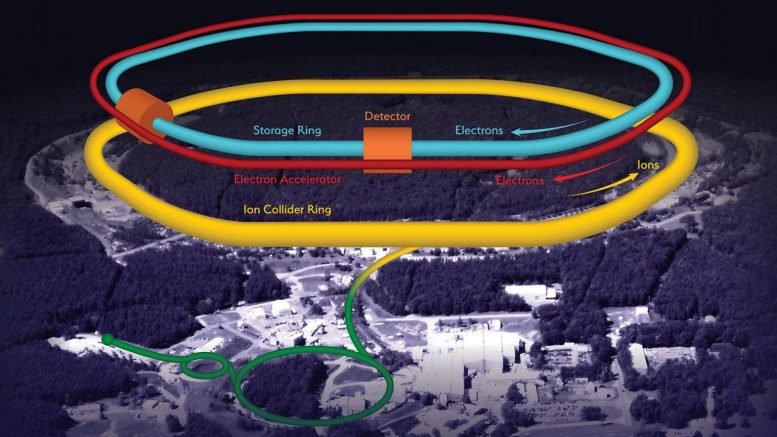Particle accelerators at CERN helped us understand physics in a much better way, with its new discoveries and experiments. Although researchers at CERN believe that they have just scratched the surface.
The Possibilities of particle accelerators are exciting to scientists as nobody up until now has been able to connect the missing link between the quantum world and mechanics. The big world we see through telescopes and the smaller ones we observe with sophisticated detectors in CERN.
Physicists think they are getting close to a single “The theory of everything”
Future plans for new colliders:
There are a lot of theories and ideas going on about which colliders to build next but there are three major ones that are going to be operational in the near time.
1. Update to LHC
As the LHC begins a new season of data collection, researchers and engineers all around the world are already looking ahead and working hard to make its successor, the High-Luminosity LHC.
This improvement is scheduled to go into effect in 2026, increasing the number of accidents by a factor of five to ten.
Physicists will be able to fully use the increased number of collisions to investigate the phenomena observed at the LHC in more depth.
2. Electron Ion Collider

When the Electron-Ion Collider was approved in January 2020, it became the world’s only new large accelerator under construction.
A high-energy electron can be used to probe the substructure of protons and neutrons in an electron ion collision.
Protons and neutrons are made up of quarks that interact with one another via the strong interaction mediated by gluons.
The EIC’s scientific breakthroughs will help us all comprehend where we came from and how the observable stuff around us is made up of its basic building components.
3. Lepton Collider
Although one lepton collider was dismantled at CERN to make way for LHC, now would be a great time to bring some edge to the Lepton Collider since it was the most powerful collider ever built.
Some of its’s advantages are –
- Leptons are point particles not composite.
- Total energy from the electron-positron collision can be converted into energy for new particles.
- The energy is clean and controllable.
In general, lepton colliders are excellent for precision research, but we haven’t had a cutting-edge one since the LEP was active over 20 years ago.
Is this all worth the money?
The cost of building the LHC was around 4 billion dollars.
Why waste so much money?
The estimated cost of hosting the Tokyo 2020 Olympics was around 12 billion dollars. LHC wasn’t that expensive, was it?
It was an amazing feat in its own right when it found the renowned Higgs boson and verified its place in the Standard Model of physics.
It established the presence of an unseen mechanism that plays the critical job of imparting mass or substance to all other particles.
Big deal, but has it changed anything practical in our daily lives? Obviously not.
However, it is a significant step toward understanding how the universe works, and there is much more to come.
So, it is not always about the money. The knowledge we gain from this research and experience goes much beyond that.
Questions we hope to get answered with new colliders
- What’s the Endpoint? What will be the fate of the universe?
- Why does the Higgs Boson Exist?
- Where do Astrophysical neutrinos come from?
- How is the universe so balanced?
- Why is there more matter than antimatter?
The next proton collisions may disclose something about the vast majority of matter that exists but has yet to be discovered – the so-called dark matter.
They could find proof for the strange concept of additional dimensions, or swarms of hitherto unknown particles that form pairings with the ones we know about.
All of this would introduce us to a new way of viewing the fabric of everything we see and touch – how it is produced and what holds it together.
These findings, as amazing as they are, would not change anything tangible about how we wake up the following day to confront our lives and our job.
What exactly the future of particle collider?
The Future Circular Collider (FCC) is the study of existing colliders with the aim to significantly increase energy and luminosity post-LHC particle accelerator. This collider will complement existing technical designs for linear electron/positron colliders (ILC and CLIC).
According to CERN, The goal of the FCC is to push the energy and intensity frontiers of particle colliders, with the aim of reaching collision energies of 100 TeV, in the search for new physics. The FCC examines scenarios for three different types of particle collisions: hadron (proton-proton and heavy-ion) collisions, like in the LHC (FCC-hh) electron-positron collisions (FCC-ee), as in the former LEP. Other options include proton-electron collisions or proton-heavy ion collisions.
In 2020 FCC conceptual design report was submitted as input to the 2020 update of the European Strategy for Particle Physics.
Sources:
What is the point of the Large Hadron Collider? – BBC News
5 Unanswered Questions That Will Keep Physicists Awake at Night – Scientific American Blog Network
Electron–ion collider – Wikipedia
What does the future hold for particle physics? – YouTube
https://home.cern/science/accelerators/future-circular-collider















